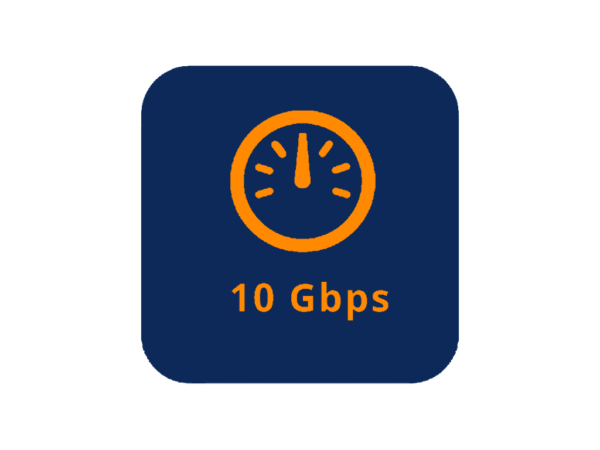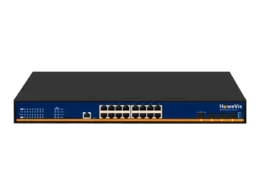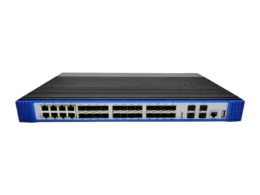Data speed or power supply is not what it used to be in the 90s or at the beginning of the 21st century. Revolutions over revolutions made things better and easier for us. Let’s take the example of data speed. In 1990, the maximum data speed was around 1Mbps. Is that enough? Not if you are at data centers. Things changed when the Institute of Electrical and Electronics Engineering (IEEE) introduced Fast Ethernet providing data speed of 100 MBs per second — HUNDRED MBs PER SECOND. Incredible! The quest of IEEE engineers doesn’t end here.
Later on, in 1999, everything changed. Do you know, why? There is Gigabit Ethernet. Complete solution for data centers or intensive data units. 10GB per second speed is no longer a dream today. Just connect your Cat6 Ethernet port and get the data speed at your home.
What is a router?
Nowadays, WiFi is standard in our offices or home. With a WiFi device, you can observe another device routing the internet to your smartphone or laptop. What can be that device? It is a router. Not much is tricky to define.
A router is a device that receives the data packets and defines their route to transfer them to the target IP address. It might also perform intelligence functions like analysis of packages. In the internet of Things, your emails are in the form of data packets.
How does a router work?
As the name suggests, the router provides a route to the data packets. By that means, it can define the destination and target devices and direct the traffic to them. The WiFi connection can help get the data over the network. Without a router, it becomes difficult to send the files or receive the data connection.
What are the types of a routers?
Routers are of different types. For example, WiFi routers are other than Ethernet routers. Many differences. However, we can have a look at the types of routers we have today.
Wireless Router
What do you think of wireless routers? They don’t have any cables for the routing functions. In WiFi networks, you can find these routers to direct the data packets or receive internet from your WiFi. They use the antennas to transfer the data packets. Usually, they receive the radio signals and convert them to binary signals.
Wired Router
Unlike wireless routers, these routers employ wires to connect the computer and provide internet. In Power over Ethernet, you can determine the applications of wired routers. These use firewalls to offer a secure internet connection to the local area network(LAN) for security purposes.
Virtual Router
Consider it as built-in software in the devices. It becomes functional only if the physical routers fail to work. Usually, it remains disabled. Virtual routers work with Virtual Router Redundancy Protocol (VRRP).
Core Router
Core routers can be wireless or wired that can transfer data within the network. It has limited functionality as you can’t transfer data packets outside the network.
Edge Router
Precisely opposite to the core router, the edge router can work within multiple data networks. It can send or receive data packets to various networks but not within the network.
Do I need a 10GB router?
Yes, you need a 10GB router. If we talk about the usual network, you need a router to route your traffic. But, here are some cases to help answer this question.
- Scenario 1: If you have a layer 2 switch
- If you are using a layer 2 switch, it does not offer any routing features. By that means, to route the traffic, you need a 10GB router for your 10GB Ethernet. Therefore, for 10GBE, you can observe routers in the network in the data management centers. The router receives the data packets, performs intelligence, and forwards them to the target computer.
- Scenario 2: If you have a Layer 3 switch
- For the layer 3 switch, the scenario is quite different. Do you know, why? Because the layer 3 Ethernet switch acts as a bridge between the devices and provides the features of a router. The host and target devices’ given IP addresses can receive data packets, analyze them, and forward them. At many offices, you can observe the use of a layer 3 switch with no router.
Why do I need a 10GB router for a 10GB Ethernet?
Routers offer several advantages in terms of cost, feasibility, and network connectivity. They can improve the traffic over the network and make sure the path is accurate for file transfer. Over the IP address, this process is even more secure and authenticated. However, routers come with the following advantages for the users.
10GB Router Improves the performance of the network
The ultimate goal of the router is to come up with a high performance of network. It can define the pathways of the files and use the IP address to transfer them over the network. By dividing the overall traffic, it can boost the performance of the network. Therefore, better to use in many networks.
You can enjoy a Secure Connection
Not a perfect alternative for the antivirus but can protect the data files and prevent various cyber threats. Over the LANs, it can transfer the files to the specific device on the IP address. Other devices might not even access it. It increases system security to some extent.
10GB router enables Dynamic Routing for Network
Dynamic routing is a great advantage of the router. It can determine the data packets’ available paths and select the best one to transfer the files. It reduces the network traffic and improves the performance of the network as well.
The router always has Backup Plans to continue the data supply
External traffic components failed? No worries, the router always has backup plans. Through the best possible route, it can direct the traffic if any external traffic components fail. Therefore, enterprises use the routers for better efficiency of the network traffic.
Routers reduce the network traffic for optimal speed
High-traffic networks are an actual problem for data centers. Especially in 10GB Ethernet, there is a high-traffic network. Is there any solution to get the optimal speed and prevent interference? Yes. Use a 10GB router that can reduce network traffic by generating collision domains and broadcast domains. Furthermore, dynamic routing optimizes the speed of the network.
10GB Router applies packet switching and filtering rules
Routers have predefined rules for the specific packet switch and filtering. This way allows only the particular data packets to pass through and reach the target device. No domain collisions might occur. It can boost the overall performance of the network and access only the specified data packets.
What are the applications of routers?
Here are the applications of the router.
- To send media files or emails, ISPs (internet service providers) use the routers. It makes the whole process easy to do on the IP address of the devices.
- Software testers use the routers for testing the wide-area network (WAN) communication.
- Enterprises use the routers to connect the hardware equipment with remote servers like BSC, MGW, IN, and SGSN (Serving GPRS support node).
- Provides a faster rate of data transmission because it employs STM (Synchronous Transport Module) links. Therefore, you can find its applications in both wired and wireless networks.
- Access restrictions are possible with the routers. By that means, data centers can keep the data private and make it available to only allowed users. Therefore, routers are available at the data centers more specifically.








